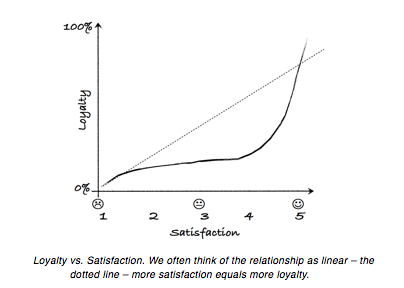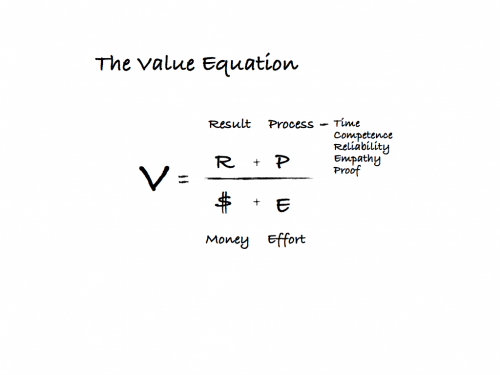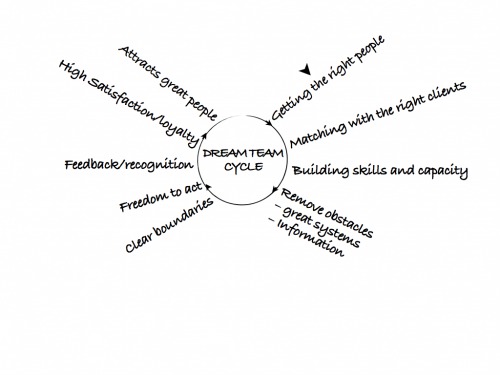Everything you always wanted to learn about the 3 key elements of The Service Profit Chain
Here are some ideas for you. on how to apply the 3 key elements of the service profit chain..
1) You have heard about the Service Profit Chain but you are wondering what all the huha is about start here
2) You would like to take a deeper dive and understand all the moving part of this fascinating strategic way of looking at the service industry. Learn how to start application in your business Explore this
3) You would like to read an in depth overview of what the service Profit chain model could do for you – start reading below this list of ideas section
4) you are browsing for some ideas and inspiration – go to my blog here it is packed with ideas and thoughts on how to improve your service delivery
5) You don’t feel any of the above works for you : drop me a line an let me know how i can best help you

The Service Profit Chain
A brief introduction to the key concept behind most succesfull service organisations
The service-profit chain shows the relationships between profitability/growth , customer loyalty, value and employee satisfaction, loyalty, and productivity.
Successful service managers pay attention to the factors that drive profitability and growth: investment in people, technology that supports frontline workers, revamped recruiting and training practices at every level.
Contents
- The key relationships and links
The key relationships and links
Profit and growth are stimulated primarily by customer loyalty. Loyalty is a direct result of high customer satisfaction. Satisfaction is largely influenced by the value of services provided to customers. Value is created by satisfied, loyal and productive employees. Lastly, employee satisfaction is a result from high-quality support services and policies that empower employees to serve customers well – also called internal quality. If you wish to influence the upper level (growth and profit) you need to look at the bottom level first which is internal quality.
These are the key elements
The key elements of the Service Profit Chain
- Profit and Growth: Although a large majority of successful service companies have a purpose other than making profits this is still a recognised simle measure of succes.
- Customer Loyalty: A high degree of customer loyalty has been found to be the number one factor driving profits and growth in the service business. A solid fan club that loves your services is a very valuable asset, and if you have a greater number of loyal fans than your competitors do, you will outperform them.
- Customer Satisfaction: Obviously, there is no loyalty without first having a high level of satisfaction. Satisfaction is closely linked with expectations. When we get what we expect, we are basically satisfied. If we get less, we are dissatisfied.
- Value: For a service experience to provide basic satisfaction, it must be valuable to the consumer. The world is full of examples of companies that got lost along the way and forgot that it is not about what the company believes it is delivering, but about what the consumer feels he or she is getting.
- Productivity: The ability to understand and decode what customers are really asking for and to convert that desire into delivering the appropriate products and services has, more than ever, become a crucial frontline employee skill.
- Employee Loyalty: Retaining great service people in their positions over time has a direct effect on our ability to deliver value.
- Employee Satisfaction: The obvious first step to great loyalty is basic employee satisfaction. Basic satisfaction is closely connected to job context – the environment in which they get to do the job.
- Internal Quality: To reach a basic level of satisfaction and, hopefully over time, more than that, we need to at look at job context and job content. Getting context and content right is driven by the dream team cycle.
The concept was first offered as in an article in the Harvard Business Reviewin 1994 by James L. Heskett, Thomas Jones, Gary Loveman, W. Earl Sasser, and Leonard Schlesinger and 3 years later the subject of a book, The Service Profit Chain – How Leading Companies Link Profit and Growth To Loyalty, Satisfaction and Value, published in 1997. In the book, the authors argue how there is this strong and direct relationship between employee satisfaction, customer loyaltyand profitability.
The 3 key elements of the Service Profit Chain
–
Customer Loyalty and Satisfaction
In practical terms, you could say that enthusiasm and loyalty signify a very high degree of satisfaction. But we need to distinguish between the two because they are driven by different factors.
You might think that the relationship between loyalty and satisfaction is linear, so that a little more satisfaction results in an equivalent increase in loyalty. Unfortunately, this is not the case at all. We can best illustrate this by looking at a graph of the relationship between loyalty and satisfaction.

As you can see, the curve has a hockey stick shape.
Et takes more than just satisfaction
From deeply dissatisfied to relatively happy, nothing much happens. Then, as satisfaction becomes more than just satisfaction and turns into enthusiasm, loyalty increases sharply. This means that when we deliver the right service/product at the right price, at the right time, and to the agreed-upon specifications, we score a 3 or possibly a 3.5 if we are lucky.
According to Fred Reichheld (REF), there is only one question you need to ask and one number (the answer to the question) that you need to pay attention to. The question is: On a scale of 1 to 10 how likely are you to recommend our “service” to a colleague or friend?

Answers from 1 through 6 are “detractors”, 7s and 8s are “neutrals”, and 9s and 10s are “promoters”. Only the enthusiastic are counted as promoters. The satisfied 7s and 8s are lukewarm and don’t count.
The rest (1 through 6) are in reality answers that correspond to customers who will likely make a negative comment if asked to recommend the service provider.
Calculating NPS
Now, of all clients surveyed, if we disregard the neutrals and subtract the detractors from the promoters, we arrive at the net-promoter score as a percentage of all customers surveyed. So if I survey 1,000 customers, and 500 of them are promoters, 100 detractors and the rest are neutrals or did not respond, I can calculate my NPS as:
NPS = ((500-100) / 1000 ) x 100 = 40%
Brands such as Apple, Harley Davidson, and Amazon.com have high net promoter scores of 66%, 81%, and 73%, respectively.
So the only number you need to watch like a hawk is your net promoter score, how high it is, and – more importantly – whether it is increasing. If it increases, you are doing something right. If it decreases, you are doing something wrong. End of story.
more on customer satisfaction and loyalty
Understanding Value from the customer perspective
Value in service companies can be illustrated by the value equation:

Result
What is the primary need of the customer? If I want to go to Paris, it’s just travel from A to B. Nothing more – nothing less. If I order a party for my family, what is then the primary result? It has to be a memorable experience, and what is a memorable experience? It can vary a great deal depending on who the customer is. The obvious consequence of not understanding the needs of the customer is that they might never return.
Process
We can achieve the primary result – getting from A to B – in many ways. The difference is the way we do it. In the Value Equation, we call this the Process. We have to analyze our processes in terms of what creates value for the customer because it almost always increases the expenses. The Ryanair concept aims at minimizing the processes of getting from A to B, leaving the customer with almost nothing but the primary result.
Price
Price is, of course, what the customer has to pay for the service.
Effort
Effort is to which degree the customer makes an effort, him or herself, in the service delivery. If you do your shopping in IKEA, you make a great effort yourself – when you pick up your furniture in the stock or remove your service from the table after your meal. The effort reduces the price. If you order room service, you make a tiny effort but have to pay some more for that luxury.
Variables
In this way there are always four variables we can influence in the service concept. Result, Process, Price and Effort. These four variables together constitute the Value Equation, and all service products are a unique combination of these particular four elements. IKEA, Ryanair, 7-Eleven, and Hotel D’Angleterre each work with their own particular combination. The most clever service companies have several value equations operating at the same time – one for each group of customers and situation.
Dream Team Cycle

The Right Team
Careful selection of new recruits. Hire for attitude. Train for skills. Coach for performance and that includes dealing with the bad apples.
Continuous Improvement
Best in class training and development at all levels in the organization. Continuous improvement is considered one of the great benefits of the job. “In this job, I grow”…
Great Support Systems
Service is not just something the frontline does for our customers. Service is our culture. Employees and managers who do not have customer contact service the employees that do. (Our IT department is not the IT-Police – it is an internal service department that supports the frontline in getting the job done.)
Empowerment
The best service employees take pride in solving the problem on the spot. So the freedom to act is hugely motivating. Southwest Airlines famously tells its employees, “You may do anything you are not uncomfortable doing to solve a passengers problem.”
Clear Expectations
In the same way that anyone who has made it to a great sports team knows what is expected of them, employees in the best service organizations also know what is expected of them. It is part of their motivation to be part of a team that is not afraid to set the bar high.
Appropriate Rewards and Recognition
Focusing on what works, celebrating success, and acknowledging each other’s contributions makes work meaningful.
High Levels of Satisfaction and Engagement
As a result of Steps 1-6, we generate not just higher levels of satisfaction, but also real engagement – Service work becomes fun and meaningful.
Employees Recommend New Employees
When we need to recruit new team members, our best employees recommend friends and previous colleagues from other organizations because these are the people they would like to work with. Gradually we become the preferred employer in our region – which means we get the pick of the crop.
——————————————————————————–
Reference and further reading
Anderson,Eugene W. Mittal,Vikas (2000). “Strengthening the Satisfaction-Profit Chain”, Journal of Service Research, 3(2), November, 107-120.
Bowman, Douglas, Narayandas, Das . “Linking customer management effort to customer profitability in business markets.” Journal of Marketing Research 41.4 (2004): 433-447.
Heskett,James et al. “Putting the Service Profit Chain to Work”, Harvard Business Review, (March–April 1994) 164-174
Heskett,James L. et al. The Service Profit Chain: How Leading Companies Link Profit and Growth to Loyalty, Satisfaction, and Value. New York: The Free Press, 1997.
Hohnen, Michael. (2013). Best! – No Need To Be Cheap If You Are….
Kamakura,Wagner et al. (2002). “Assessing the Service-Profit Chain”. Marketing Science, 21(3), Summer, 294-317.
Pallas, Florian Mittal, Vikas Groening, Christopher, Allocation of Resources to Customer Satisfaction and Delight Based on Utilitarian and Hedonic Benefits (2014). Journal of Research in Marketing, Vol. 2 (1), 106-112.
Websites
Build a Better service Business